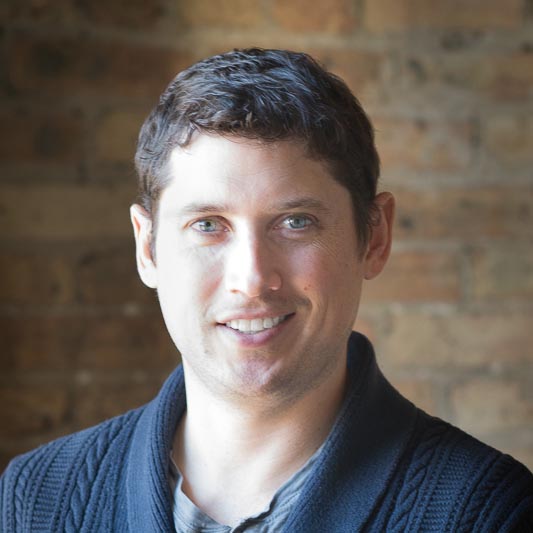5 Neighborhoods That Made Their Mark on TV Shows and Movies
The recipe for a great TV show or movie consists of quite a few things. You’ve got to have engaging characters, an interesting plot, and iconic moments. In many instances, the setting helps elevate a story from so-so to memorable. Most often, that setting is the neighborhood your favorite characters call home. The sights, the sounds, and the experiences of where they call home become so ingrained in the viewing experience that it’s impossible to consider the show or movie taking place anywhere else.
There are plenty of made-up cities and neighborhoods used in TV shows and movies, and there are plenty of real cities that get their cinematic due, but we wanted to shout out the real neighborhoods that stood out and ultimately became indelible parts of the viewing experience.
check out more content from our all about the neighborhood week
West Village, Manhattan - “Friends”
West Village, a neighborhood within the larger Greenwich Village, certainly didn’t need “Friends” to make it famous. This Lower Manhattan artist’s haven has long been considered the place for young New Yorkers. Over the years, The Village became an epicenter for bohemian culture, the LBGTQ movement, and 1960s counterculture.
Like so many neighborhoods in Manhattan, the area eventually gave way to an influx of new businesses and a new generation of young residents who weren’t exactly looking to shake up the system but wanted to live in a place that still felt like it had some edge. This made it the ideal setting for “Friends” in the 1990s and 2000s.
The hit sitcom about a collection of six friends in their mid-20s (at least at first) flailing through life and trying to figure themselves out captured the transitioning demographics of the West Village into the coffee shop and bar hub it is today. While the show didn’t actually film in the West Village, Central Perk (which is technically in SoHo in real life) and other locations helped paint a picture of life in the big city (even if Monica’s apartment was way too big to be believed).
Venice, Los Angeles - “White Men Can’t Jump”
In the opening scene of “White Men Can’t Jump,” Woody Harrelson’s Billy Hoyle stepped onto the iconic beachside basketball courts in Los Angeles’ Venice (https://www.neighborhoods.com/venice-los-angeles-ca) neighborhood to hustle Wesley Snipes’ cocky Sidney Deane. What follows is one of the most memorable basketball scenes in cinematic history, and it’s just the beginning of the film’s love affair with this Westside neighborhood (even if the basketball scenes were actually shot on a court a mile north of Venice).
The film also takes its characters across LA into different neighborhoods, including Watts and Baldwin Hills, but it’s the scenes in vibrant Venice that are the ones people most remember (along with those flashy outfits).
You can’t lace up your sneakers and join a pick-up game there today and not think of the film. In fact, head to 66 Windward Avenue in Venice and you’ll see a “White Men Can't Jump” mural staring back down at you.
Bed–Stuy, Brooklyn - “Do The Right Thing”
This Spike Lee film covers a day in the life of Bedford-Stuyvesant residents over the course of one summer day. In the movie Bed-Stuy, as it’s known, has gone through a huge demographic shift, and as we quickly find out, that’s the source of a lot of friction. What was once largely an Italian-American neighborhood becomes a place mostly populated by African-American and Hispanic residents. Everything comes to a head inside an old school pizza parlor where the old and the new clash, eventually giving way to tragic results.
The story of the film deftly covers the story of a real neighborhood as Bed-Stuy really did have a seismic demographic shift across the 20th century, which led to many confrontations. These days, Bed-Stuy has shifted once more thanks to recent development. Lee would later return to the neighborhood to make it the setting for “Crooklyn” as well.
Fillmore District - “Full House”
It’s a credit to how iconic the house from “Full House” is that even though the entire show was filmed in a studio, the first thing you probably think of is the shot in the opening credits of their Italianate Victorian home from across Alamo Square in San Francisco’s Fillmore District. The opening credits depict the Tanner Family et. al frolicking in the park, just a block removed from their classic house in an idyllic city neighborhood.
For a long time, this neighborhood was one of San Francisco’s middle-class havens. However, when the area witnessed a boom in property values, it became one of the wealthier areas in the region. All of which is why we find it hard to believe that the Tanners would be able to afford their home, even if there were at least four people with jobs at any given time living there.
East Village, Manhattan - “Rent”
Technically, “Rent” is best known as a musical, but the movie version is what puts it on our list. Everything about this story, which follows a group of poor young artists struggling to make ends meet under the looming threat of eviction and the HIV/AIDS crisis, couldn’t be set anywhere else other than Manhattan’s East Village in the late 1980s/early 1990s.
So many of the incidents and places in the musical and film are inspired by real ones. Life Cafe, the location of the epic "La Vie Bohème" number, is based on a real East Village restaurant. And the riot that takes place is based heavily on the East Village riot of 1988.
“Rent” captures a very specific moment in time, not just for these characters but also for a neighborhood steeped in counterculture and artistry. While some felt like it was a glamorization of the East Village scene, “Rent” at least makes sure that its story lives on even as it evolves along with the rest of Manhattan.

